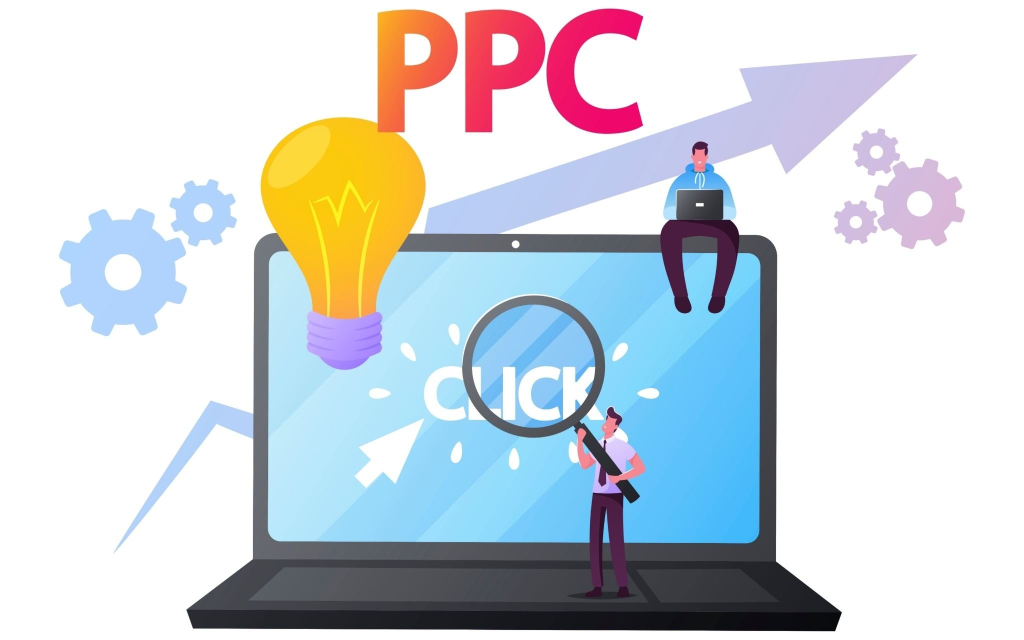
You’ve found the right site if you’ve heard about PPC marketing and are interested in discovering more or if you know you want to use PPC to market your business but need help figuring out how to get started. Start here with the first course at PPC University to learn everything you need to know to implement pay-per-click advertising successfully.
Table of Contents
So, What Exactly is PPC?
With pay-per-click (PPC) advertising, you only pay when a user clicks on your ad from the search engine results page (SERP) after entering your target keyword(s) or phrase(s). The search engine results page (SERP) will charge you a fee depending on how many people click on your ad.

Good leads can be gained with PPC if it is used properly. The results of your pay-per-click (PPC) campaign could skyrocket if you take the time to design a streamlined experience for your visitors, as we’ll discuss in more detail below. PPC Marketing advertising is widely employed on social media platforms in addition to search engines like Google and Bing (although CPM is more common). Pay-per-click advertisements appear before and to the right of the organic search results. Examine the ad that occurred when I typed “cards” into Google.
Definitions of Common PPC Jargon
A marketing platform is only complete with its share of jargon and acronyms. There are several key phrases you should know if you’re going to work in paid advertising. Below, we discuss the most general to most specialized aspects of a PPC Marketing campaign.
Promotion Using Search Engines (SEM)
All digital advertising strategies aim to improve search engine rankings for a particular keyword. Paid and organic promotions on Google, Yahoo!, and Bing are all examples of Search Engine Marketing (SEM).

Search engine marketing (SEM) refers to paid advertising and organic search engine rankings for specific keywords. Remember that not all pay-per-click advertising is limited to search engines; PPC Marketing ads can also be seen on social media platforms (think: Facebook Ads).
CPC
Advertisers pay a certain amount for each click on your ad, known as the cost-per-click (CPC). You can think of CPC as your offer in an auction to place your advertisement. A more extensive bid results in a higher position for the ad. By adjusting your CPC, you decide how much you’re willing to spend each click on your ad. The final price is calculated by the following:
CPC = (Competitor’s Ad Rank / Your Quality Score) + 0.01%.
So that you understand precisely what you’re paying for, let’s go over the variables in this equation:
Ranking Advertisements
An advertisement’s ranking on a search engine results page is based on this value. The formula is Maximum Bid * Quality Score.
Evaluation Scale for Quality
This is the rating search engines give your ad based on several factors, including the quality of your keywords, the relevancy of your landing page, and your ad’s success in the past on the SERP.

Maximum Bid
You can choose your maximum bid here, the price your ad will cost to have a user click on it.
For an illustration of what I mean, please see the following image created by WordStream:
Manual CPC lets you specify the maximum bid for your adverts, whereas enhanced CPC lets search engines optimize your submission automatically. Bid strategies, which automatically alter your requests based on clicks or conversions, are one example of these augmented possibilities.
CPM (Cost per Mille)
Cost-per-thousand impressions, or CPM, is the cost of ad placement based on a specified number of impressions. Paid social media and display advertising rely heavily on it. To keep things simple, we’ll refer to “clicks,” also known as “cost-per-acquisition,” while there are other sorts of “cost-pers,” such as “cost-per-engagement” and “cost-per-acquisition” (CPA). CPC.
Campaign
Your ad campaign is the starting point for your pay-per-click advertising setup. Your campaign is the overarching idea or message you want people to take away from your ads.

Conclusion
This book is a fantastic introduction to pay-per-click advertising. It covers all you need to know to set up or quickly adapt to PPC Marketing accounts. However, “always be testing” is an unofficial mantra among the PPC community. Ensure you put various settings and methods to the test on your account. It’s impossible to generalize the behavior of one account to another because every user has a different set of circumstances. Of course, standard procedures exist because they are generally accepted as the most effective for most accounts. Still, you can only know for sure if you do your experiments.






